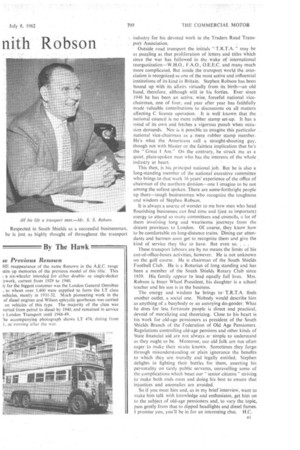Not So Easy As It Looks
Page 34

Page 35

If you've noticed an error in this article please click here to report it so we can fix it.
PROPOSALS to adopt decimal coinage and the Meteorological Office's use of the Centrigrade temperature scale inevitably lead. to speculation on the wholesale adoption of the metric system. I know of one commercial vehicle manufacturer's works where the drawing office staff would probably tear out what remains of their hair if this came about. Fourteen years ago it was decided to change from millimetres to inches for all drawings. So far as can be gathered, this was influenced by the universal use of inches by American competitors in many of their export markets.
One can go into the same office today and still find drawings being produced with a mixture of inches and millimetres among the dimensions. The reason?—the continued use of manufacturing jigs and fixtures which are far too expensive to scrap. Many small items on a chassis remain unaltered in design over long periods, and replacement of dies and other equipment required to make them rarely becomes due at a convenient time for redesign of mating parts.
Even on larger items certain key dimensions tend to be retained largely for reasons of manufacturing convenience. A.E.C. have been making engines with stroke dimensions of 142 mm. for over 30 years and Leyland have favoured 51 in. for even longer, although in both cases the actual designs have changed completely.
A32
Mark Well
ESE thoughts were prompted by the editorial 'suggestion THESE
a recent issue of the Hepolite Bulletin that the name used for 0.01 millimetre in the Hepworth and Grandage works, a "mark," might be convenient for general adoption with the metric system in place of " thou " indicating 0.001 in.
The two dimensions are somewhat different in size, the mark being just under four times as big, so that it would more often be necessary to talk about tenths of a mark. It sounds a convenient name, though.
Demon Friction
TN the same journal there appears a summary of a paper 'presented by A. E. Cleveland and I. N. Bishop to the Society of Automotive Engineers. Dealing with power losses in private car engines, it draws attention to the high proportion of frictional loss which can be attributed to the piston and ring assembly.
Some two-thirds of the total engine frictional losses are reckoned to come from this source, and on the " compact " car used as an example this is calculated to be equivalent to a loss of 5.1 miles per gallon.
It is significant that one well-known British commercial vehicle diesel engine, which produces virtually unsurpassed fuel economy despite the theoretical limitation of a rather low compression ratio, has three-ring pistons and is known to have a low friction horse-power.
It is logical to associate high cylinder Pressures with more friction from the piston rings. In the case in mind, the losses on the compression ratio roundabout are evidently more than counterbalanced by the gains on the friction swings.
te Previous Renown
HE reappearance of the name Renown in the A.E.C. range stirs up memories of the previous model of this title. This a six-wheeler intended for either doubleor single-decker lywork, current from 1929 to 1940.
iy far the biggest customer was the London General Omnibus , to whom over 1,400 were supplied to form the LT class vehicles, mostly in 1931-32. Much pioneering work in the of diesel engines and Wilson epicyclic gearboxes was carried on vehicles of this type. The majority of the class was verted from petrol to diesel by 1940, and remained in service
London Transport until 1948-49.
'he accompanying photograph shows LT 474, dating from 1, as running after the war.




















































































































